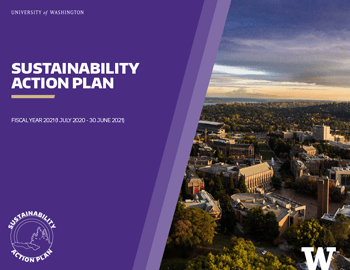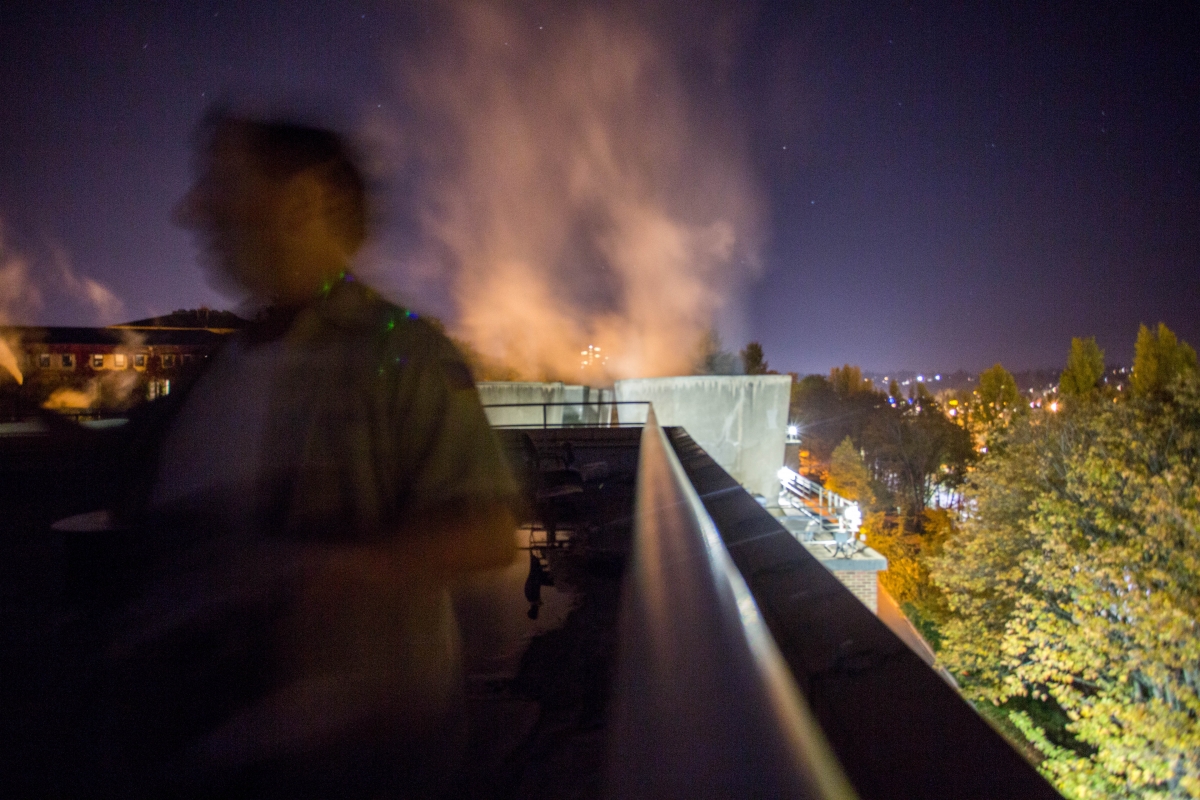FY23 progress
Target actions for 2023
- Plan to repower the Seattle campus
- Electrify UW Transportation Services
- Implement Seattle campus solar plan
- Develop a UW Carbon Roadmap
In 2023, the UW started work with Cascadia Consulting Group to conduct a greenhouse gas emissions inventory and analysis report, with an expected delivery and publication in Fall 2023. This will mark the first time UW has conducted a consumption-based inventory as part of its Scope 3 emissions (i.e. indirect emissions), along with a comprehensive look at Scope 1 and 2 (i.e. direct emissions from electricity and fossil fuel combustion). The report will provide a holistic and granular analysis of GHG reduction progress over a 2005 baseline, as well as GHG composition at the three campuses, self-sustaining units, sectors and subsectors. A key element of the final report will be a ‘contribution analysis’ of key changes in operations-based emissions, and a wedge analysis of pathways to meet near and long-term organizational GHG reduction targets. This level of analysis is necessary to better identify opportunities and inform decision-making for UW emission reduction efforts, as well as providing solid data to help set priorities and targets for the future version of our Sustainability Action Plan.
Plan to repower the Seattle campus
The UW’s Energy Transformation Strategy lays out a blueprint for the UW to transition away from fossil fuels, largely by converting the campus heating system from steam to hot water. This will also allow the Power Plant to electrify, switching from natural gas boilers to district-scale heat pumps which can take advantage of various waste heat sources. Over the past year, the UW has concentrated on Phase one of the strategy, which calls for energy conservation measures to reduce our electrical load in existing buildings.
In the past fiscal year, the UW spent about $3 million on energy and water conservation efforts, which marks a 400% increase from the previous year. This money went to replacing aging equipment, updating lighting and installing new monitoring systems which will allow the UW to take informed steps to reduce the university’s carbon footprint.
In addition, over the past year work started to raise awareness of the project across the UW community, especially with stakeholders and decision makers. UW Sustainability and UW Facilities facilitated tours of the Power Plant to show first-hand the operations and needs of the current plant. Tour attendees included UW leadership, faculty, staff and students, along with local and state government representatives.
UW Sustainability has also worked with UW Facilities and UW Marketing and Communications to publish stories in various UW sites on the Energy Transformation Strategy, including an article on the UW Today site in conjunction with Earth Day.
Electrify UW Transportation Services
In the past year, UW Transportation Services has taken delivery of 21 Ford E-Transit vans and 12 Chevrolet Bolts to increase the number of fully-electric vehicles in the UW fleet to 76, or about 10% of the total fleet. There are also 42 plug-in hybrid vehicles in the UW fleet, and more electric vehicles have been ordered. In 2023, more than 12% of the total miles traveled by UW fleet vehicles were electric-powered, up from 1.5% in 2018. The UW is also committed to continuing to add electric vehicles to the fleet.
There are three projects currently underway which will add EV charging capacity to existing UW parking lots. The largest of these is looking at the E-2 parking lot, which will provide 74 new Level 2 chargers and six new Level 3 fast chargers, along with other security upgrades. The total cost of the project is expected to be about $1.48 million. Transportation Services is also moving forward with a Solar Canopy Project for E-18, which will provide a 100 kW solar canopy to power future EV charging stations. This project also falls under the “Implement Seattle campus solar plan” action for this target.
Develop a UW Carbon Roadmap
The UW is developing a Carbon Reduction Roadmap to determine how the institution will meet our carbon reduction goals. Washington State has set mandatory requirements for state agencies to reduce GHG emissions by 45% by 2030, 75% by 2040 and 95% by 2050 (based on a 2005 baseline). The Carbon Roadmap is intended to serve as a planning tool to facilitate reaching these goals by the deadlines or sooner.
Over the last year, UW has been developing a draft Carbon Reduction Roadmap to identify what actions are needed to reach net zero carbon by 2050. The Carbon Reduction Roadmap is, in a sense, a comprehensive to-do list with actions across different categories of emissions, including the energy transformation of our central steam plant, building metering and energy efficiency, to electrifying our fleet and landscaping equipment, and reducing our plastic waste by increasing to-go container reuse programs. In 2023, a working group met with key stakeholders across the UW system including the Bothell and Tacoma campuses to gather information on existing emission reduction actions. The Carbon Roadmap will identify unit actions to reach a 2050 net zero goal.


